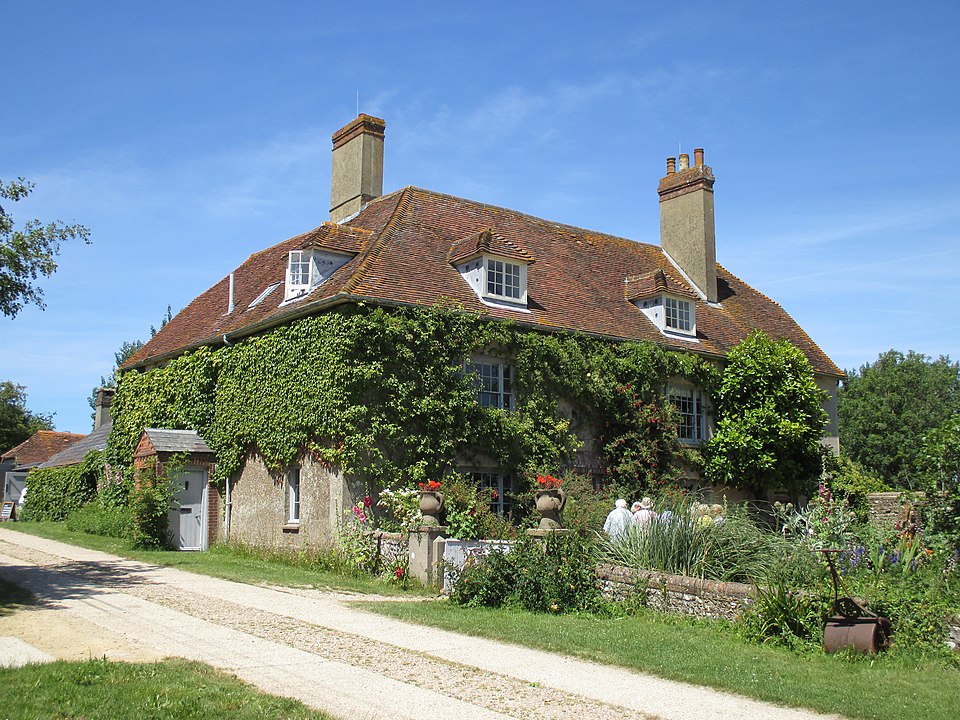not as royal, but better cultivated!
Diving in and out of Virginia Woolf’s diaries and biography anew, I have been attentive to her intense relationship with place. The homes of her childhood and younger years are never far away; returning as fragmented memories, misplaced, reimagined and memorialised in her writing – think about the Stephen family’s “Talland House” and childhood summers in St.Ives and the Ramsay’s summer house on the Isle of Skye in To the Lighthouse. Or the walks she took and places she went as related in many a diary entry, then reimagined and true to the time in the city as seen through the eyes of Mrs. Dalloway or any Pargiter.

And for Woolf, Sussex is a very special place. Here, at the time of her marriage in 1912, she found in “Asheham House” near Beddingham sanctuary from the distractions of London, but still near to “Charleston Farmhouse”, the Firle home of Vanessa and her complicated family and their seemingly endlessly brilliant string of guests. Distractions it seem had a way of following her, and were perhaps never quite as unwelcome as often would have it!

Later, in 1919, she and Leonard purchased “Monk’s House” in the village of Rodmell which would remain until her death her (their) constant retreat. The walks, the garden, the weather, the famous “writing shed” – that room of her own, all the visiting and being visited upon; as much as the profound inner life and intellectual musings – and the gossip! – it is the every day, often the mundane, as lived in her rural sanctuary that bring her diaries to vivid life, just as flowers come to bloom.

By the way, Asheham is no more, but an afterlife was granted it by grateful Woolfs – the romantic Leonard getting the better of the cerebral self in an autobiographical aside and a spirited Virginia imagining a ghostly couple bound for eternity in a short story entitled A Haunted House, first published by Hogarth in Monday or Tuesday in 1922, and later in a collection published by Leonard in 1944. Who was this ghostly pair? Perhaps the shades of their very selves, the Woolfs, viewed from a distant future; forever young, forever in this place.
I am thinking about all of this after reading this travelogue piece at The New York Times. A bloomin’ good find it is! And some tempting photos (including the tulip image above) for fans of the English countryside or Bloomsbury pilgrims, or both, planning a tour. A couple of years old I know, but I am relatively sure County Sussex still exists – even if the “Duke & Duchess of” have lately done a runner!

Not in Sussex but very much Woolf relevant, Sissinghurst Castle in neighbouring Kent, once the home of Vita Sackville-West and her husband Harold Nicolson, is also visited. Say no more (!), except to say, I was rather surprised that the author did not go to “Knole”, near Sevenoaks, which is also under the auspices of the National Trust and accessible to the public, after all it was Sackville-West’s torment over the loss of her beloved ancestral home that inspired Virginia Woolf to write Orlando – as an act of consolation, and love, towards Vita, but also out of rage shared at the extreme gender bias of archaic inheritance laws – primogeniture. Not mentioned either (but then it does seem to be in private hands) is the nearby “Long Barn” which was Nicolson and Sackville-West’s home until they bought Sissinghurst in 1931, and the place of many a gathering between an extraordinary coterie that evolved and revolved around them; including the Woolfs and friends, but wider intellectual circles including from politics – and a political spectrum that was to become more and more unsavoury.
Just one other mention of note. The author and her husband dined at “Thackeray’s” in Tunbridge Wells; named after William Makepeace Thackeray (1811-1863) who once stayed in the building; one of those once very famous Victorian writers, who may well be out of vogue now but whose novel Vanity Fair may still ring a bell to some. Thackeray’s daughter Minny was the first wife of Leslie Stephen and another daughter Anny Ritchie (1837-1919) (I use Anny as a diminutive form of Anne here as Woolf does, but notice elsewhere, the more common ‘Annie’), a novelist and guardian of her father’s legacy, was as step-aunt so to speak, a constant in the extended Stephen household, a teacher and a role model of sorts for Virginia – in what a woman could be, but even in representing to Virginia what she didn’t want to be. On Anny’s death, she wrote an obituary for the TLS (6 March 1919); claiming in her diary entry for 5 March “…done Aunt Anny on a liberal scale […] dressing it up a trifle rosily…”, and remembers her as perhaps the last connection to her childhood and formative years at Hyde Park Gate, and more generally to the Victorian world of her father’s generation. And though Woolf confides some doubt in “…the sincerity of my own emotions!”, there is levelled towards Richie none of the bitterness afforded to others, either in life time or in death.
